Articulation arthrosis is a degenerative (or metabolic) disease, that is, not -inflammatory.But the causes of joint arthrosis are not fully studied by official medicine.The versions are presented with overweight, age, metabolic disorders in tissues (muscles) and joints, premature wear of the cartilage, small loads, large loads and so on, genetic and so on, contributing to arthrosis.That is, it is unclear what to influence to treat and effectively prevent knee joint arthrosis.
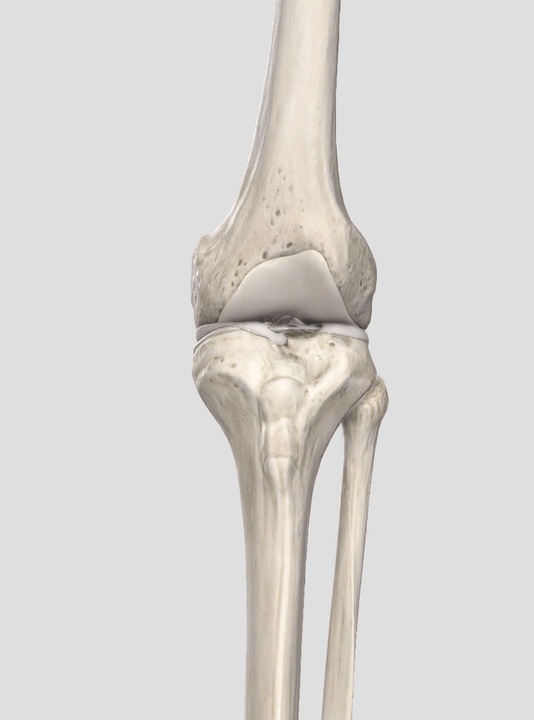
In fact, (and this is confirmed by medical literature and evidence -based experience), arthrosis is a consequence of the disease of the interested muscles (muscles that spread through a specific articulation).Sick muscles in a constant compression state carries excess pressure on the joint, causing their wear.
Knee Articulation Arthrosis - What is it?
The Arthrosis of the Knee (Like Any other) joint is differently called deforming osteo arthrosis (that is, the degeneration of cartilage and bone) is the progressive degenerative -Dystrophic leio of the cartilagous and bone (near cartilage) tissue, its erasuure andReduction, Which Leads to the Dysfunction of the Joint (Limiting Mobility in the Joint) and Causes Mobility) Sensations of Various Intensity.
Syple, this is the wear of the joint, means that the wear of the cartilaginous tissue, which should ensure a smooth sliding of the joint surfaces relative to each other, and the bone structures in which the cartilage is located.This whole process is accompanied by a narrowing of the intermediate space and the loss of elasticity of the ligament apparatus.
Knee Articulation Arthrosis: Symptoms
Often the disease continues asymptomatic and can only be detected in an magnetic resonance imaging.At her "mature" stage of the disease, she may feel felt increasing pain in the problem area and motor restrictions in the joint.At the same time, arthrosis is a common problem and occurs in 70% of all joint injuries.It is impossible to call the cause of the development of the disease, but there are certain factors that usually become a catalyst for arthrosis.
The main symptoms of knee joint arthrosis include:
- Knee joint pain of different intensity and duration
- Knee joint stiffness is the inability to completely straighten or double the leg in the knee joint (sometimes it is impossible to squat)
- Clicks and knee joint crushing.It is believed that the joint loses the liquid and the joint surfaces slide relatively to each other, this can be accompanied by a characteristic sound
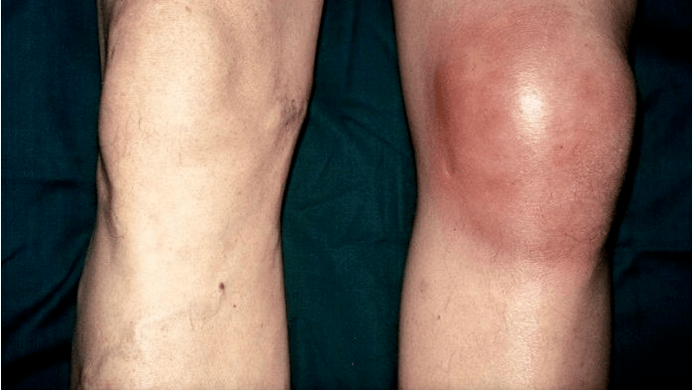
Knee articulation arthrosis: reasons
However, narrow profile experts believe that the main cause of joint arthrosis is myofascial syndrome, which manifests itself by a disease of the muscles that overlap through an interested joint (trigger points).
The trigger point is a focus of tension in muscle fibers, which is activated under certain conditions and manifested by acute pain.It is precisely by trigger that myofascial syndrome is recognized.In the case of trigger points, muscle elasticity is lost, due to which joint mobility decreases.They emerge as a result of injury, as well as with intensive or chronic muscle overload, a prolonged stay in an immobilized state.
The muscles are in a state of hiring (constant compression) and this excess compression is in the interested joint (in our case, in the knee joint).
Arthrosis of the knee articulation and arthritis, what is the difference?
To understand the cause and nature of the course of the disease, it is very important to determine the difference between arthrosis and arthritis.Its main difference is that the nature of arthrosis is not inflammatory, while arthritis is an inflammatory pathology.At the same time, inflammatory processes are systemic in nature and spread to the whole body.
Arthrosis is a metabolic pathology caused by metabolic disorders in the body.Arthrosis pain syndrome occurs under combined conditions - firing points and various joint disorders.The elimination of trigger points will lead, if not to complete recovery, for significant improvement in the general condition.
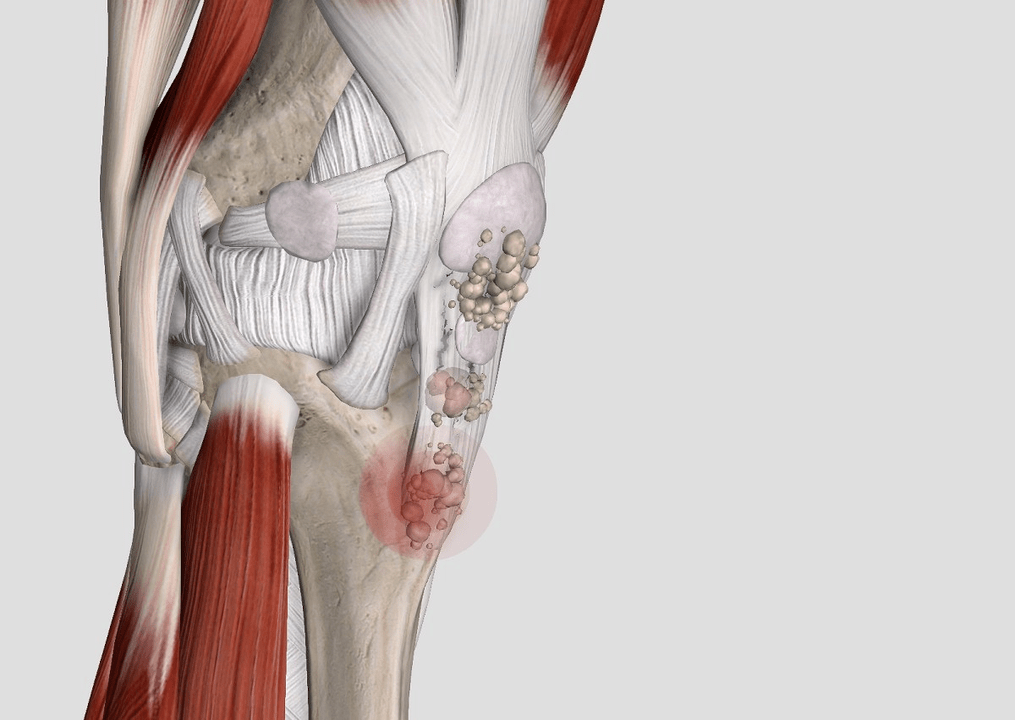
The main criterion of knee joint arthritis is the presence of an inflammation agent - that is, viruses, infection, fungus, bacteria.In addition, there may be any location place of an infectious agent.Often gonorrhea or other sexual infections can enter a chronic form and give complications to the joints.
With knee joint arthritis, it is observed redness of the skin around the joints, swelling and increased joints in the volumes, an increase in the temperature of the whole body and the joint locally is observed.With knee joint arthrosis, these symptoms are usually not.However, arthrosis and arthritis can be found combined.
4 Stages of knee articulation arthrosis
If, if arthrosis is detected, so as not to start its comprehensive treatment, over time the disease will begin to progress and symptoms will aggravate.The appropriate diagnosis and proper therapy, which effectively combine with other treatment methods, will significantly improve the patient's general condition and avoid prolonged, painful and expensive treatment.
The 3 (4) stages of the development of knee arthrosis are officially distinguished:
- 1 degree.This is a period of time from the appearance of the first symptoms of arthrosis to its visible manifestations, which can already be detected during the initial exam or at a root X. The patient's condition is characterized by painful sensations of different intensity that occur during movement.
- 2 degree.The patient experiences discomfort and "shooting" pain in small loads.Human movements can be accompanied by a knee crisis when walking, squats, etc.It is possible to reduce knee joint mobility.The area affected by arthrosis seems visually deformed and increased in size.
- 3 degrees.There is virtually no cartilage fabric within the joint.With a particularly advanced form, complete limb immobilization may occur.It is difficult for the patient to adopt a situation in which he would feel comfortable, moving without auxiliary means becomes almost impossible.
- In addition, the fourth stage of knee joint arthrosis can be distinguished separately.This condition is a complete destruction, which leads to the fact that the joint completely loses its functionality.At the same time, the patient experiences “joint block” - acute pain syndrome.
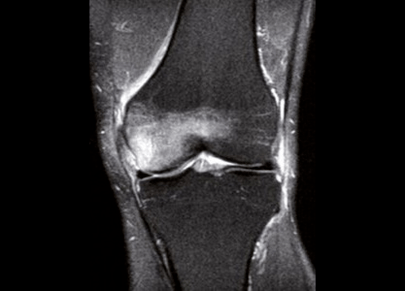
Diagnosis of knee articulation arthrosis
Arthrosis is a chronic disease whose treatment is comprehensive and regular.Therefore, the appropriate diagnosis and the proper therapy will allow the patient to minimize the damage to the knee joint joint.
The diagnosis of arthrosis is also complicated by the fact that the disease can be often asymptomatic.However, in the presence of painful sensations, the doctor after examination may prescribe radiography.And while their results cannot always be indicative, they give a general idea of how much the disease has "advanced forward."
More accurate data can be obtained, thanks to modern diagnostic methods - ultrasound, magnetic resonance imaging, etc.
However, magnetic resonance changes do not always correspond to the patient's sensations and complaints.It turns out that, in the image of the knee joint, there are degenerative-distribution changes in the cartilage and meniscus and ligaments, but there are no complaints.And vice versa, there is pain and other symptoms and, on the exam sheet, everything is normal.
Remember that with knee joint arthrosis, it is important to diagnose the hip muscles (leg muscles, thigh quadriceps) for the presence of myofascial trigger points, which in 80% of cases give pain and lead to changes in joint figures.
IMPORTANT: If the patient has psoriasis, arthrosis may be psoriatic genesis.
Ineffective methods to treat knee articulation arthrosis
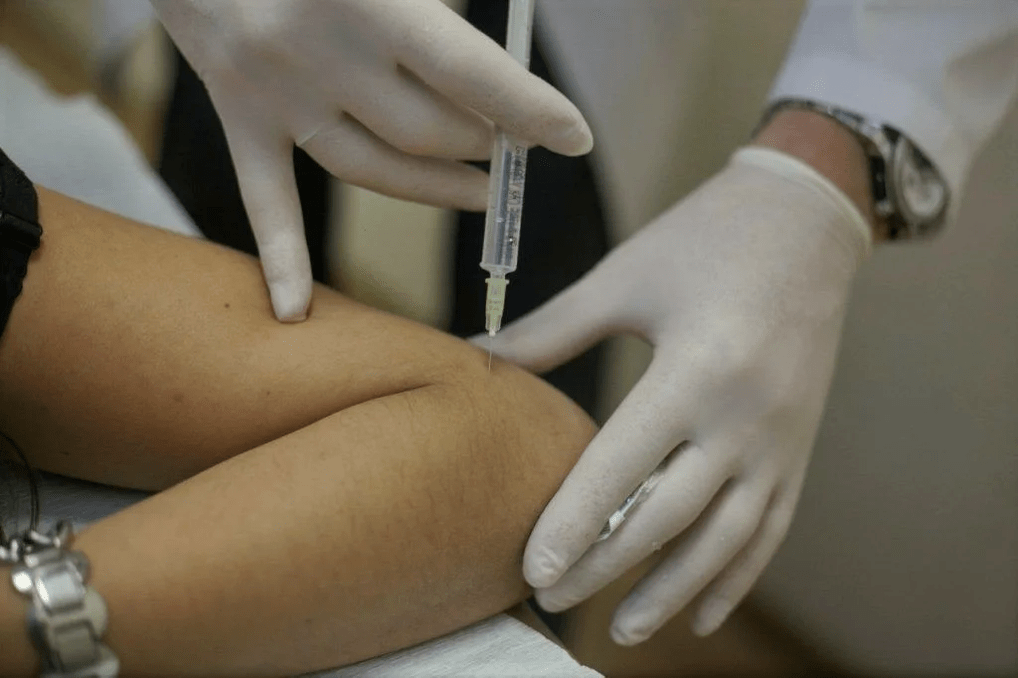
All official arthrosis treatment methods are divided into:
- no -pharmacological;
- Pharmacological;
- Surgical.
Surgical intervention is a necessary measure at the advanced stage of the disease.The operation is performed to replace the joint destroyed with a synthetic analog.
Practicing doctors, as a rule, prescribe various physical therapists and exercise therapy (Physical Education of Physiotherapy) to treat knee articulation arthrosis.However, force exercises exacerbate only the course of the disease, activating trigger points, increasing pain, etc.Therefore, this method of therapy is ineffective.
KHANDROPROTECTS deserve special attention.It is believed that the drugs of this class restore the cartilage.Firstly, the basis of evidence of these drugs is dubious in nature, because these studies of these expensive medicines are performed by the manufacturers themselves.Secondly, it is a symptomatic treatment, ie it is intended for investigation, not to the reason.The reason is muscle disease.
Articulation arthrosis is a degenerative, ie non -inflammatory disease.But the causes of joint arthrosis are not fully studied by official medicine.
The versions are presented with overweight, age, metabolic disorders in tissues (muscles) and joints, premature wear of the cartilage, small loads, large loads and so on, genetic and so on, contributing to arthrosis.That is, it is unclear what to influence to treat and effectively prevent knee joint arthrosis.
In fact, (and this is confirmed by medical literature and evidence -based experience), arthrosis is a consequence of the disease of the interested muscles (muscles that are thrown through a specific articulation).Sick muscles in a constant compression state carries excess pressure on the joint, causing their wear.
Effective treatment of knee arthrosis
Proper therapy of knee joint arthrosis should be systemic and complex.It is based precisely on muscle treatment and includes taking medications (to adjust aggravating and harmful factors for MFs) and properly selected physiotherapy of the joint and knee hip muscles) and, of course, myofascial massage.
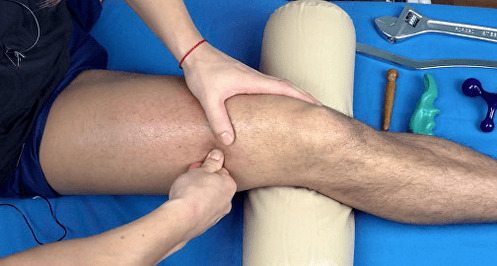
The most effective methods for TT treatment are:
- Deep massage;
- Relief trigger points
- Shockwave therapy
- Post -Isometric relaxation.
In addition to the anterior thigh muscle, massage is also performed on the synergist and antagonist muscles.At the same time, the patella itself is not massaged - the massage expert makes the main emphasis precisely in the muscles.
The main "device" massage is the Master's hands.For self -massage, multiple devices are used that contribute to increasing the effectiveness of the procedure.
Exercise Therapy for Knee Articulation Arthrosis
The final stage of therapy is the performance of the exercises to stretch the upper (frontal) surface of the thigh.It is important that you feel the tension where you massage.
By prescribing and performing physiotherapy exercises with knee joint arthrosis, it is important to understand the basic principle - that is, why these exercises are performed (for what purpose).The main objective is to stretch all abbreviated muscle fibers (cramps) so that the muscle can stretch completely in its anatomical volume of motion.
Prevention of knee articulation arthrosis
In the treatment of the disease, it is important to observe preventive measures that include the following actions:
- Correct diet compilation: Your daily menu should be balanced and rich in tracking, proteins and vitamins.After all, the lack of foods such as calcium, magnesium and zinc leads to worsening myofascial syndrome;
- Moderate physical activity: Try not to carry the knee joint unnecessarily and avoid its traumatic damage.If the muscle is in a static position for a long time - this contributes to the formation of triggers;
- Refusal of bad habits: Take a healthy lifestyle, follow your weight;
- Complex therapy: Combines popular methods of treatment with auxiliary.
Auxiliary methods to treat knee joint arthrosis
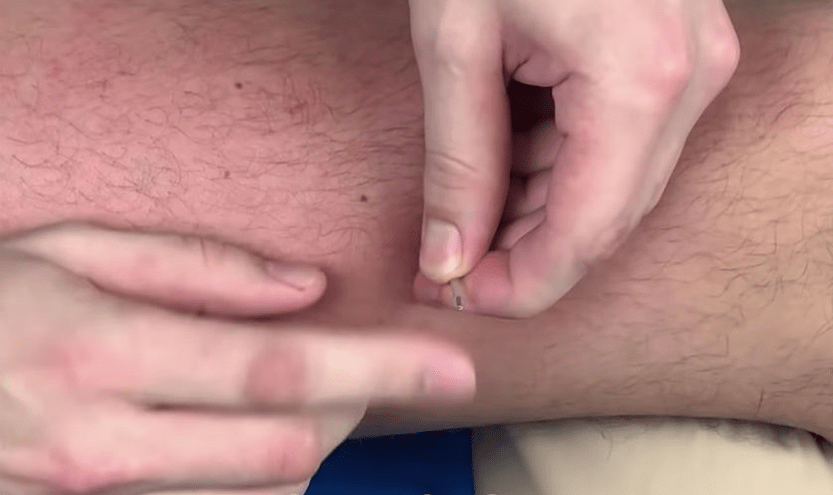
The treatment of knee joint arthrosis will be especially effective if combined with auxiliary therapy methods.Consider the most popular of them.
- Laser therapy.This procedure is considered the most popular and common among patients suffering from knee joint arthrosis.The therapeutic effect is achieved due to the reflex expansion of the blood vessels above the focus of the pathological process in the muscle.This contributes to the normalization of metabolism (do not forget, arthrosis is a metabolic disease) and helps reduce pain syndrome.
- Cryotherapy.This method is not as popular as the previous one.However, its effectiveness is quite high.Due to local exposure to low temperatures, pain in the area of the problem is significantly reduced and the formation of biologically active substances decreases, leading to the aggravation of the disease.Cryotherapy procedures contribute to the activation of blood flow processes and joint recovery.
- Balneotherapy.It is performed under resistance conditions to the sanatorium.Arthrosis aquarium implies the use of medical baths - with this disease, radon baths are considered the most effective.The therapeutic effect of procedures is an improvement in metabolic processes in the joint.
Complex therapy in combination with self -massage will improve the general condition with arthrosis and minimize the possible risks of complete joint destruction.The main thing is to adhere to expert recommendations, follow preventive measures and combine main therapy with other treatment methods.























